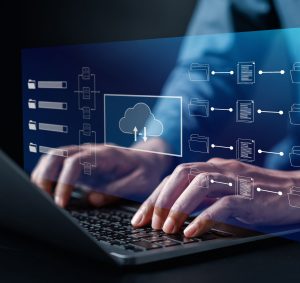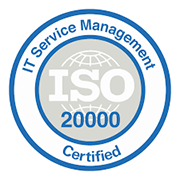The future of companies undoubtedly lies in adopting strong measures as soon as possible in terms of sustainability and employee welfare, in a context of transformation of industrial work models. In our previous article on Sustainability and Business Competitiveness we emphasized the vectors driving the transformation towards a business management model based on three pillars: Social Responsibility, Circular Economy and Emissions Management.
In short, it is a commitment between the level of awareness of the impact on the future of each company and the possible adoption rates, the leadership orienting towards these scenarios and allowing to generate competitive values and business benefits, as well as paying attention to the regulatory components that are appearing on a daily basis.
In this article we echo the reflections published by LNS Research, where it describes some current trends that point not only to the strategic importance of these initiatives, but also to their interconnection and interdependence.
1. Sustainability will catalyze Industrial Transformation and vice versa.
Corporate sustainability requires a holistic approach that encompasses people, processes and technology. In the recent past, efforts were aimed at achieving incremental improvements, such as an X% reduction in energy intensity or a Y% reduction in greenhouse gas emissions. However, sustainability is the best opportunity for organizational integration and learning and should leverage Industrial Transformation to deliver incremental change results.
2. Synergies between sustainability and the workforce.
Sustainability and workforce are two of the top priorities for industrial companies. Each of these represent new sources of financial and operational risk. An approach capable of integrating these two issues will help companies achieve their sustainability objectives, especially in the area of social responsibility, including workforce, health and safety, diversity and inclusion, and employee engagement, among others.
3. More investments to operationalize sustainability and ESG programs.
Effective management of relevant environmental, social and governance(ESG) risks and opportunities can be a source of competitive advantage. However, many companies simply produce reports and publications on the subject.
The most advanced industrial companies will instead focus on making the significant investments needed to integrate sustainability into the business and value chains. Sustainability will move from a public relations and communications function to anoperations-focused function. Leading companies will leverage Sustainability as a catalyst for transformation.
4. The future of industrial workplaces is people.
The role of people in the factory of the future will be more important than ever. New skills will be needed to work in a more dynamic and digitized operating environment. However, in general, industrials have been experiencing a chronic shortage of frontline workers. This trend has only worsened with the COVID-19 pandemic.
Leaders recognize the need to be more innovative in their efforts to attract, hire, train and retain the right workforce. This will require a human-centered approach based on simplified learning and development and an understanding that technology serves to augment human capabilities, not replace them.
5. Sustainability seen as an opportunity to achieve competitive advantage.
To date, companies have focused their sustainability efforts on achieving basic operational efficiency gains (e.g., energy use, resource conservation, waste reduction, etc.) and building aCorporate Social Responsibility (CSR) image. The playing field has changed dramatically with the emergence of climate change as a major threat to the planet, societies and communities, individuals and business enterprises.
This has propelled sustainability to the strategic forefront of companies and organizations. Many industry leaders have responded by incorporating sustainability into the company’s business strategy. Other companies have continued to treat sustainability as a mere tactical initiative or, worse, as a superficial public relations exercise. The goal is for more and more companies to view sustainability as a means of generating a competitive advantage while contributing to a sustainable world.
6. Big Data to maximize the results of Sustainability and workforce investments.
Industrial Transformation holds the promise of performance improvement through data-driven insights. This applies at least as much to Sustainability and the industrial workforce as to any other business issue. The proliferation of sensor-generated Big Data, and the application of advanced analytics tools including AI and ML, provide all parts of the organization with novel insights and data-driven decision support needed to go far beyond incremental improvement.
To exploit these advanced data analytics capabilities, companies must address the fundamental challenges of data management. This involves building a comprehensive set of data-related capabilities, including data modeling, collection (time-series Big Data, structured and unstructured transactional data, etc.) Those organizations intending to maximize the results of their Sustainability and workforce investments will need to use advanced data analytics capabilities.
7. More comprehensive and holistic technological solutions.
Two challenges of industrial companies for operational performance are improving cross-functional collaboration and unifying systems and data. Industrial operations are still characterized by organizational, process and data silos. This is reflected in the solutions typically offered by operational and information technology vendors, which often support a single functional domain, such as manufacturing execution, quality, EHS, asset management, maintenance, risk management, etc.
Technology providers, such as SAP, are already offering more comprehensive and holistic solutions, combining data from EHS, Sustainability, Asset Management/Maintenance, connected frontline labor, or manufacturing and automation systems and applications. Also ‘connected worker’ solutions with new features such as digital work instructions, augmented reality, remote assistance and advanced analytics.
In conclusion, the intertwined forces of Sustainability and strategic workforce issues will play an even greater role in shaping corporate business strategy. How industrial organizations address these issues will largely determine their future success.






